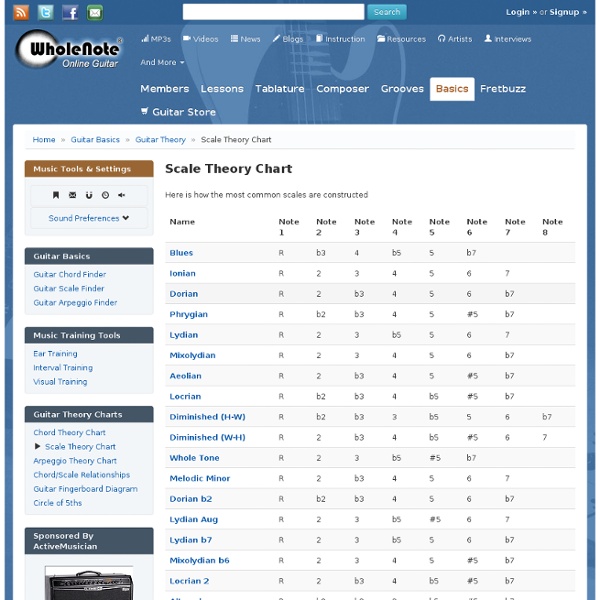



Theoretically Correct: Chord Finder, Song Transposer, Chord Transposer, Free Online Music Theory and Music Lessons Outline of basic music theory - www.oscarvandillen.com Professional music theory: an outline of basic music theory. Preface and Chapter 1 of the Outline of basic music theory – by Oscar van Dillen ©2011-2014 The beginner’s learning book can be found at Basic elements of music theory. Overview of chapters: Chapter 1: Introduction Chapter 2: Sound and hearing Chapter 3: Musical notation Chapter 4: Basic building blocks of melody and harmony Chapter 5: Consonance and dissonance Chapter 6: Circle of fifths and transposition Chapter 7: Concerning rhythm, melody, harmony and form Chapter 8: Further study Preface This outline offers a concise and complete overview of basic music theory. In order to speed up consulting this online book, its chapters can as of now be found on separate pages; unfortunately the original one-page version exceeded acceptable download times, because of the length of the total materials presented. © Oscar van Dillen 2011-2014 Chapter 1: Introduction integrating hearing-reading-singing-writing
Piano Chord Dictionary Online Piano Chords The Chord Guide: Pt III – Chord Progressions Chord progressions are the canvas on which musicians paint their masterpieces, and it’s a canvas which is a piece of art in itself. A chord progression can be subtle and in the background or it can be blatant and up front; it can be simple and catchy, or it can be technical and complex, it can stay in one key or it can change like the seasons. In any of these cases a chord progression is what drives the song as it literally shapes the music that accompanies it. This guide is meant to inject an interest in songwriting in new and old guitarists alike, I hope that at some point after reading this you will pick up your old guitar, blow off the dust, and join me in playing music. Chord Progression Guide This handy little guide will help all musicians create their own catchy chord progressions on the fly! Major Chord Chart Above is a chord chart for the 7 most used keys. Minor Chord Chart Above is a chord chart for creating minor chord progressions. Progressions With 2 Chords Chord Theory
Harmonic Progressions | Learning and Loving Music Theory Kelvin, You actually caught a mistake on the roman numerals! Thanks, I’ll have to fix that. In the classical tradition, for the sake of stability, the first and last chords of a circle-of-fifths progression are usually triads, not 7th chords. Harmonic Sequences Part 2 In the jazz tradition all chords usually are 7ths, in which case the progression will start and end with 7th chords. Thanks again for your interest and input.